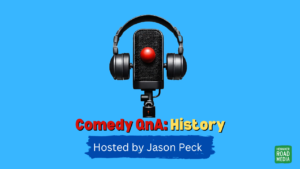If you have to make presentations as part of your job you might be able to pick up some useful tips from this post. This post is a kind of follow up to my post Lessons from President Obama’s Inaugural Speech.
This is also a great post for those who are working their way through either the Toastmasters Competent Communicator manual (project number 9 “persuade with power”) or the Persuasive Speaking Advanced manual.
You see much has been written about Obama’s speaking skill. He has routinely been compared to great speakers such as John F Kennedy, Winston Churchill, Martin Luther King Jr. and Abraham Lincoln. He uses rhetoric and oratorical skills that wouldn’t be out of place in Ancient Greece or Rome.
These days the word rhetoric has become a bit of a dirty word because the recent politics that used a lot of spin.
Dictionary.com defines rhetoric as “the art or study of using language effectively and persuasively”.
Rhetoric can be seen as someone not being honest by saying what they mean. It can be used as a criticism alluding to the fact that a lot of politicians uses rhetoric when they should just come out and speak honestly.
I don’t think there’s anyone at the moment on the political stage, as I write this, who uses honesty like Obama. But it’s how he conveys his thoughts and ideals – using rhetoric.
Sometimes when we make presentations we have to convince people of our side of the argument. So I wanted to share how we the ordinary speakers can make use of Obama’s incredible skill. Here are some Obama’s speaking techniques:
Tricolon – a series of three parallel words, phrases or clauses. Not an organ. Here’s some tricolon examples Abraham Lincoln’s:
“Government of the people, by the people, for the people.”
Or Benjamin Franklin’s: “Tell me and I forget. Teach me and I remember. Involve me and I learn.”
Tetracolon – similar to the above, but the use of four as in Churchill’s:
“I have nothing to offer but blood, sweat, toil and tears”
Anaphora – the repetition of the same word or phrase at the start of successive clauses. Near the beginning of Obama’s victory speech, he repast the phrase “it’s the answer”:
“It’s the answer told by lines that stretched around schools and churches in numbers this nation has never seen…
“It’s the answer spoken by young and old, rich and poor, Democrat and Republican, black, white, Hispanic, Asian, Native American, gay, straight, disabled and not disabled…”
Epiphopra – the repetition of the same word or phrase at the end of successive clauses. As in the example of this can be found in the use of the phrase: “yes we can” (note italics are mine):
“..Americans have responded with a simple creed that sums of the spirit of a people. Yes we can. It was a creed written into the founding documents that declared the destiny of a nation. Yes we can”.
Check out the point at 10m23 secs
These are some very useful techniques that can help your express yourself in your speech and aide your power of persuasion. You don’t have to be a politician to be able to effectively use these techniques.
Obama’s speaking skills have made such an impact that people are even writing books about his skills as a persuasive speaker: Say It Like Obama: The Power of Speaking with Purpose and Vision. Obviously, at this juncture it remains to be seen if he is able to fully follow through on some of his messages, but this is the same of any politician.
Update: April 15th 2010 President Obama has dealt with healthcare reform. While I’m not getting into taking sides in a political debate, it’s good to see someone holding true to some of the messages they put through with persuasion.
If you want a quick introduction to rhetorical devices, I can thoroughly recommend a book by Max Atkinson called: Speech-making and Presentation Made Easy: Seven Essential Steps to Success.
Next time you have to make a presentation or compose a speech try harnessing the power of these ancient techniques.
Note: There are affiliate links on this page. That means that if you make a purchase, via my link, I get paid a commission. It helps me pay the bills.



